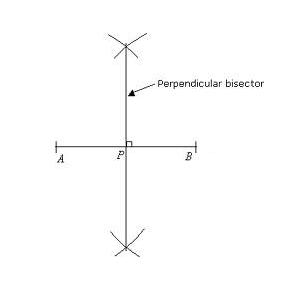How to Bisect a Line with a Compass

If you want to find the bisector of a straight line, there are numerous ways to go about the task. One the easiest ways is to use a compass and a straightedge to bisect the line into two equal halves. All you will have to do will be strike a few arcs with the compass and then, using the straightedge, join the points where the arcs intersect each other. In fact, the method is so simple that for years now, it is being taught in fifth grade mathematics to school children.
Instructions
-
1
With a straightedge and a sharp lead pencil, draw a straight line of any length. Make sure that the line you draw is not longer than the full span of the compass you will be using. Mark the two ends of the line as ‘Point A’ and ‘Point B’.
-
2
With the pointed edge of the compass firmly placed at ‘Point A’, open the compass so that its span is a little more than halfway distance along the straight line and strike two arcs, one on each side of the line.
-
3
Repeat the earlier step with the pointed end of the compass placed at ‘Point B’ this time. The two arcs you strike with the compass fixed at ‘Point B’ should intersect with the two arcs that you struck in the earlier step. Make sure that you do not change the span of the compass while transferring its pointed edge from ‘Point A’ to ‘Point B’. You now have two points where the arcs you struck using the compass intersect each other on opposite sides of the line you wish to bisect.
-
4
With the help of a straightedge, join the points where arc intersect on opposite sides of the straight line. The resulting line is a bisector of the straight line. It will be at an angle of 90 degrees to the original line and will divide the original straight line into two equal halves.







